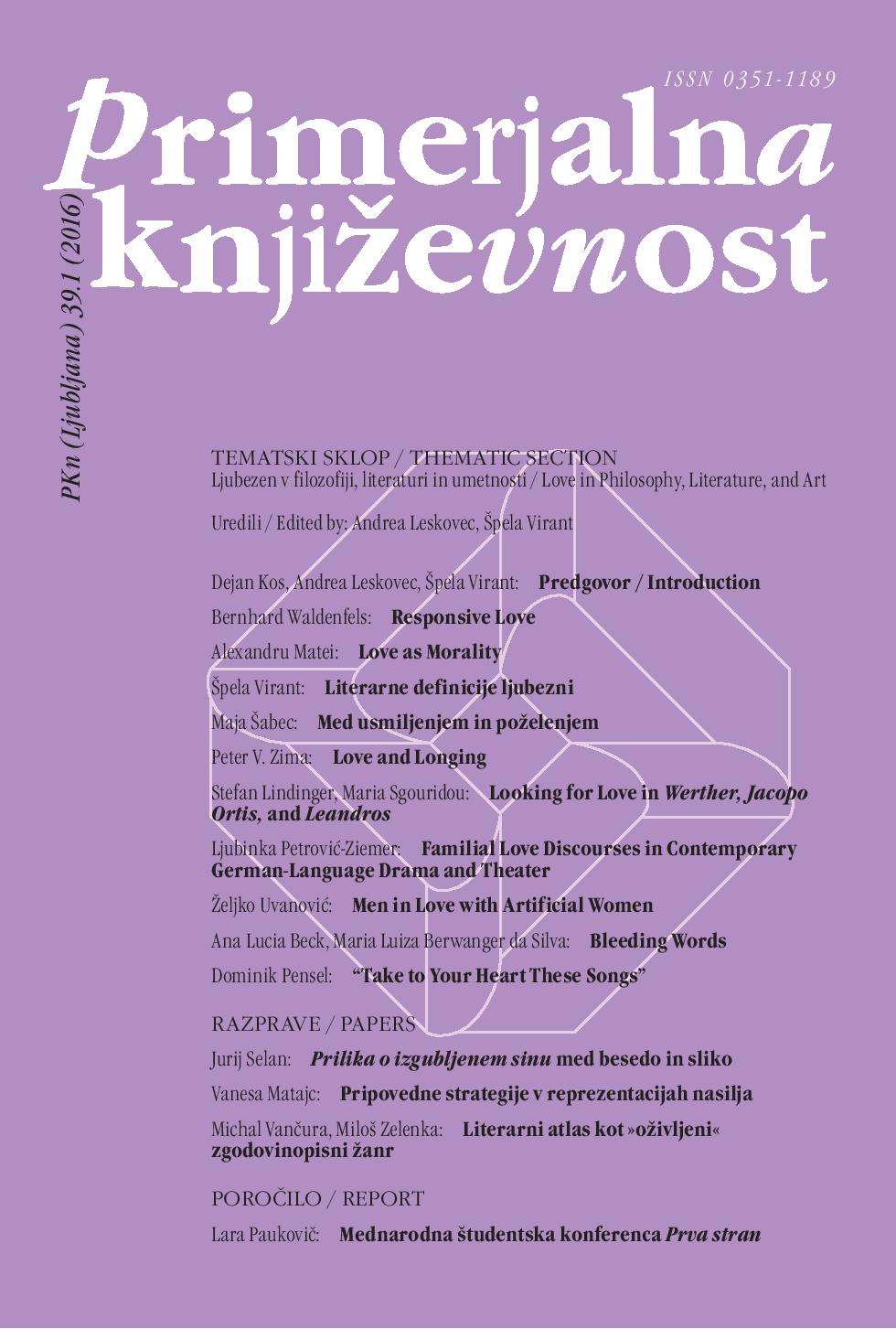Men in Love with Artificial Women: E. T. A. Hoffmann’s “The Sandman”, Ira Levin’s The Stepford Wives, and Their Film Adaptations
Keywords:
literature and film, love, Pygmalionism, agalmatophilia, Hoffmann, E. T. A, “The Sandman”, Levin, Ira, The Stepford Wives, film adaptationsAbstract
This paper provides a new reading of E. T. A. Hoffmann’s romantic novella “Der Sandmann” and of Ira Levin’s postmodernist SF thriller novel The Stepford Wives in the context of their film adaptations. The phenomenon of Pygmalionism and agalmatophilia has been traced from the Greek antiquity up to now and has been used as a net of significant analogies with literary works. Additionally, the occurrence of male attraction to artificial, non-responding female surrogates has been interpreted in the context of the diagnoses of Asperger’s syndrome and narcissism. New insights about Hoffmann’s novella could be gained in multiple intertextual, intermedial comparative procedures whereas Levin’s novel has been critically put into relationship with another literary work for the first time. The comparison has shown interesting similarities between the two literary works, alerted to the intensification of sexual alienation problems in the course of time up to now, and has warned of disagreeable consequences of certain uncanny tendencies if reality-based and digital agalmatophilia continues.References
Bauer, Douglas F. “The Function of Pygmalion in the Metamorphoses of Ovid.” Transactions and Proceedings of the American Philological Association 93 (1962): 1–21.
Beck, Julie. “Married to a Doll. Why One Man Advocates Synthetic Love.” Web 3 Dec 2015. http://www.theatlantic.com/health/archive/2013/09/married-to-a-dollwhy-one-man-advocates-synthetic-love/279361/.
Beeman, Naomi. “Uncanny Laughter: Reworking Freud’s Theory of Jokes with E. T. A. Hoffmann’s ’The Sandman’.” Comedy in Comparative Literature. Essays on Dante, Hoffmann, Nietzsche, Wharton, Borges, and Cabrera Infante. Ed. David Gallagher. Lewiston, Queenston, Lampeter: The Edwin Mellen Press, 2011. 29–56.
Bethea, David M. “Brodsky, Frost, and the Pygmalion Myth.” Russian Literature XLVII (2000): 289–305.
Dawson, Terence. “Enchantment, Possession and the Uncanny in E. T. A. Hoffmann’s ’The Sandman’.” International Journal of Jungian Studies 4.1 (2012): 41–54.
Der Sandmann. Dir. Eckhart Schmidt. Screenplay Eckhart Schmidt. Rapfaela-Film, Provobis-Film, 1993.
Durbach, Errol. “Pygmalion: Myth and Anti-Myth in the Plays of Ibsen and Shaw.” English Studies in Africa 21.1 (1978): 23–31.
Ferguson, Anthony. The Sex Doll. A History. Jefferson, London: McFarland & Company, Inc., Publishers, 2010.
Hersey, George L. Falling in Love with Statues. Artificial Humans from Pygmalion to the Present. Chicago, London: University of Chicago Press, 2009.
Hoffmann, E. T. A. “The Sandman.” The Golden Pot and Other Tales. Trans. Ritchie Robertson. New York: Oxford University Press, 2008. 85–118.
Levin, Ira. The Stepford Wives. London: Corsair, 2011.
Plant, David. “A Look at Narcissism Through Professor Higgins in Pygmalion.” British Journal of Psychotherapy 28.1 (2012): 50–65.
Robertson, Ritchie. “Introduction.” E. T. A. Hoffmann. The Golden Pot and Other Tales. Trans. Ritchie Robertson. New York: Oxford University Press, 2008. vii–xxxii.
Salama, Mohammad. “The Aesthetics of Pygmalion in G. B. Shaw and Tawfīq Al-Hakīm: A Study of Transcendence and Decadence.” Journal of Arabic Literature XXXI.3 (2000): 222–237.
Scullion, Val. “Kinaesthetic, Spastic and Spatial Motifs as Expressions of Romantic Irony in E. T. A. Hoffmann’s ’The Sandman’ and Other Writings.” Journal of Literature and Science 2.1(2009): 1–22.
The Stepford Wives. Dir. Bryan Forbes. Screenplay William Goldman. Palomar Pictures, 1975.
The Stepford Wives. Dir. Frank Oz. Screenplay Paul Rudnick. DeLine Pictures, 2004.
Weintraub, Rodelle. “Bernard Shaw’s Henry Higgins: A Classic Aspergen.” English Literature in Transition, 1880–1920 49.4 (2006): 388–397.
Wolff, J. “Romantic Variations of Pygmalion Motifs by Hoffmann, Eichendorff and Edgar Allan Poe.” German Life and Letters 33.1 (1979): 53–60.


